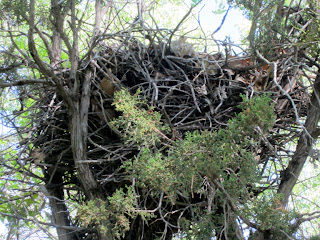Grass Mountain Pikas, oil on panel, 12 x 16 inches
Mountain Lion at Rio Pueblo Gorge, Taos / oil on canvas, 24 x 18 inches
You're all invited to Botanica, a group exhibition at Arroyo, 200 Canyon Road, Santa Fe (505.988.1002), Friday, 13 April, 5:00-7:00 p.m. I'll be there. So will the pikas.
The water dakinis are being kind to us here in Santa Fe. We've actually had a few drops of rain. And the snow melt continues to feed the mountain streams. It's been worse here. Way worse. Living through the most severe drought in recorded history, we're hanging in there.
I was out running by one of those little snow-fed streams this morning, thinking about why I paint. Maybe thinking is an exaggeration. It's pretty simple. I can't not. It's a cliché and it's true. Why I paint wildlife is a bit more complicated, but the essence of it is that I believe they'll all be gone in 100 years. I'm a visual griot, a recorder of the soon-to-be-lost.
If that sounds too doomsday for you, I hope it is. I hope I'm way wrong. I spend considerable time tracking, observing, and photographing wildlife. Painting is an excuse that enables me to do that. I also study wildlife in a nonexperiential way. I read a lot of books and research, watch films, and study other people's photos and narratives of wildlife. All of this leads me to conclude that humans have been hell bent on eradicating every living thing on the planet, ourselves included, for about as long as we have been around. And we've gotten progressively better at it. If it sounds crazy to say that there will be no mule deer in 100 years, consider that that is what people said about the carrier pigeon before it went from plentiful to extinct in less than a decade.
Cheery as thinking about an Earth without wildlife isn't, it lends an urgency to my work. I do what I can to make mine an unfulfilled prophecy.































